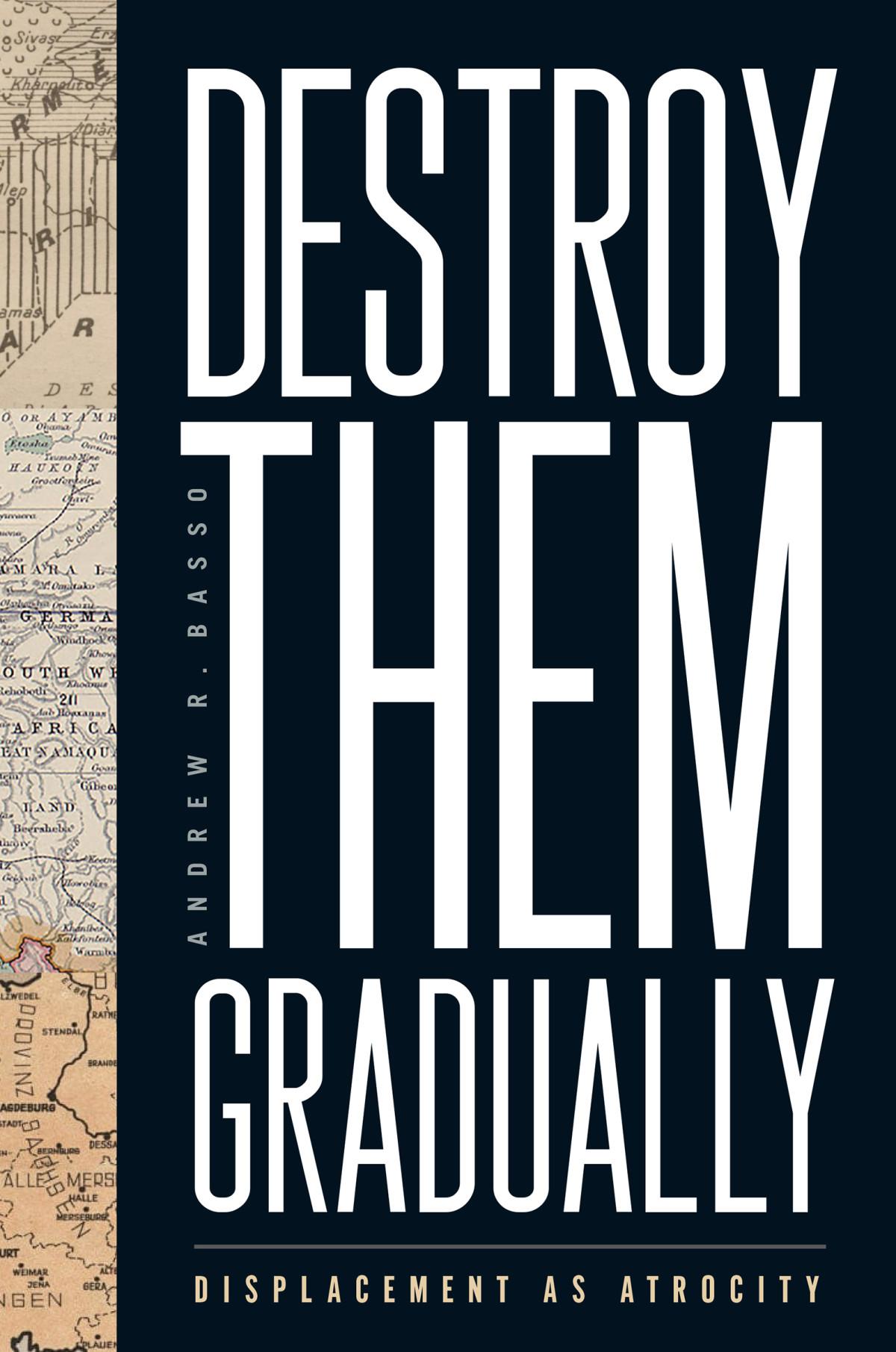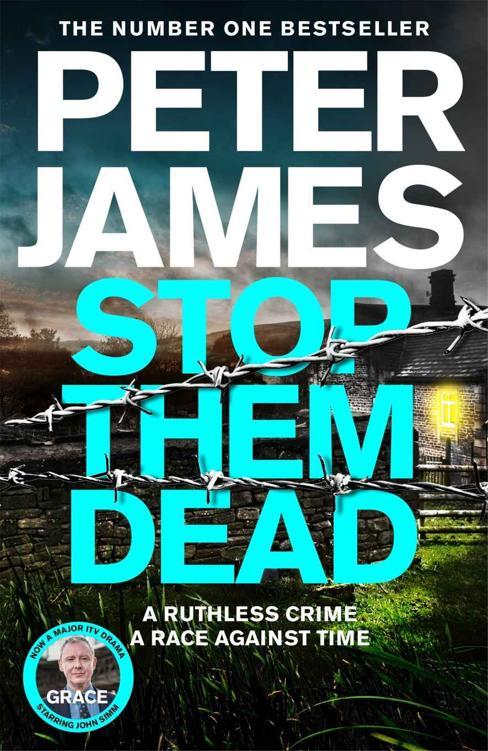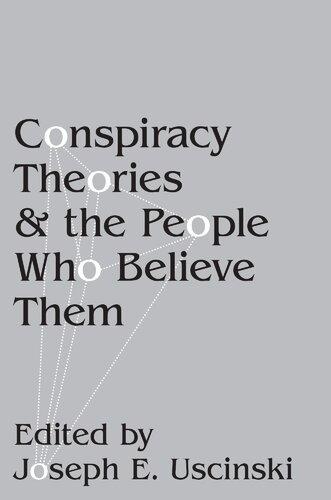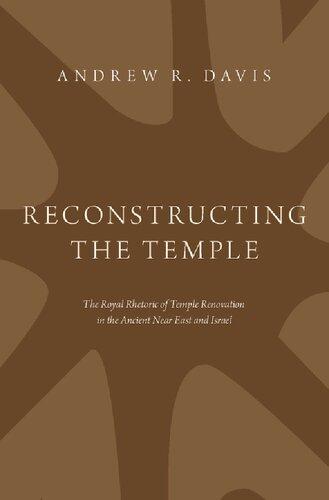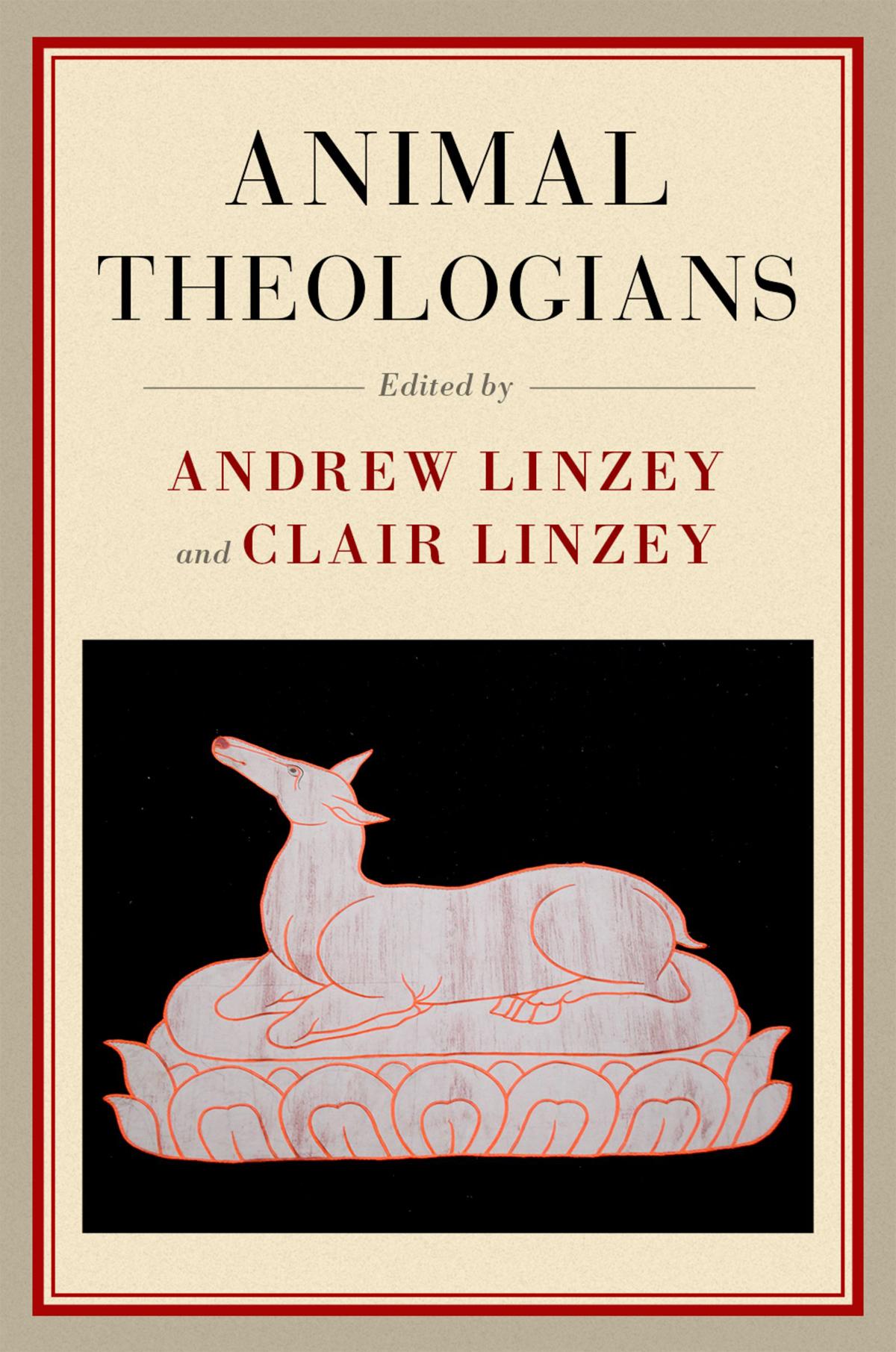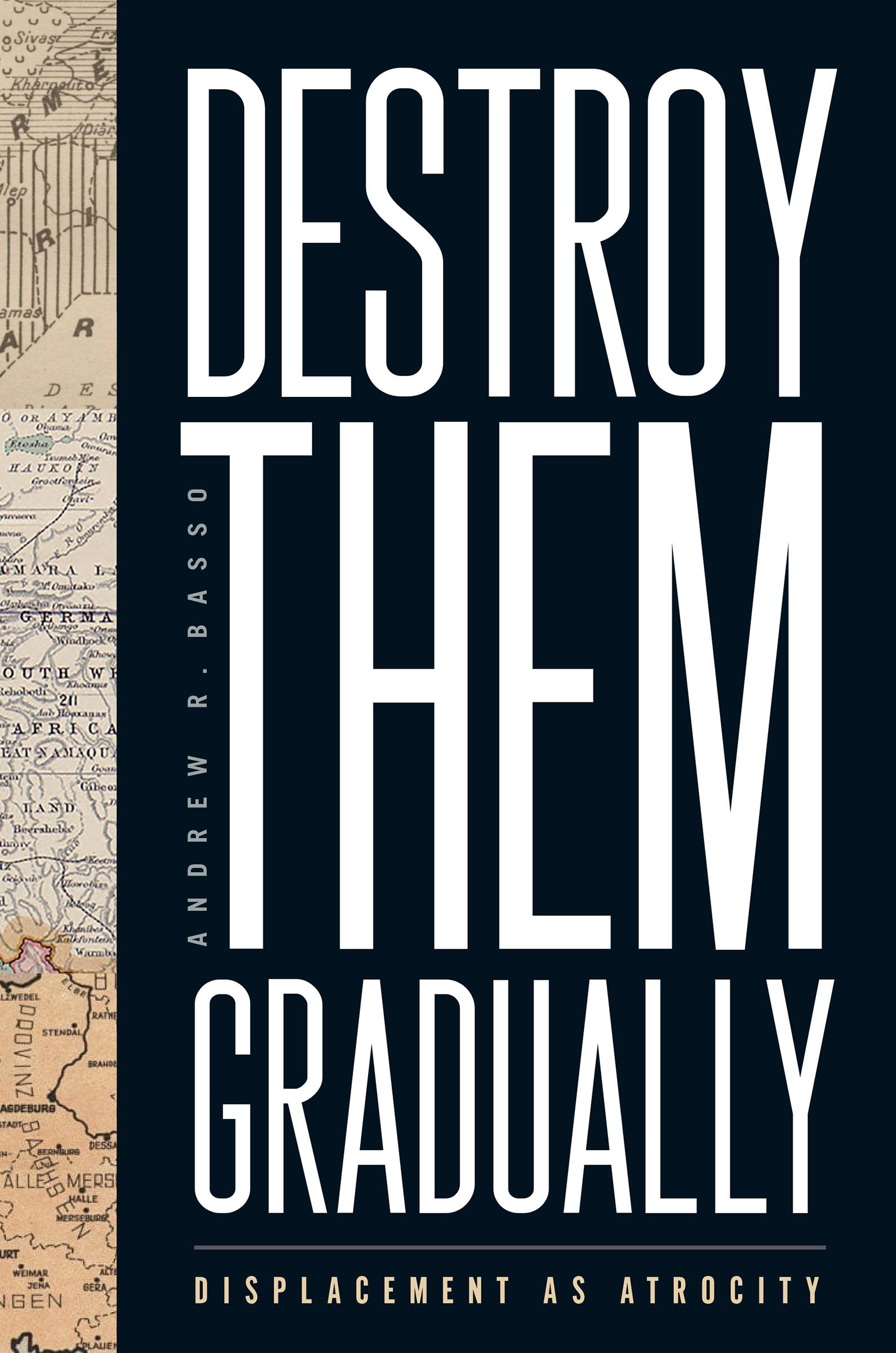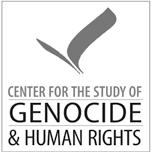Destroy Them Gradually
Displacement as Atrocity
ANDREW R. BASSO
Rutgers University Press
New Brunswick, Camden, and Newark, New Jersey London and Oxford
Rutgers University Press is a department of Rutgers, The State University of New Jersey, one of the leading public research universities in the nation. By publishing worldwide, it furthers the University’s mission of dedication to excellence in teaching, scholarship, research, and clinical care.
978-1-9788-3129-2 (cloth)
978-1-9788-3128-5 (paper)
978-1-9788-3130-8 (epub)
Cataloging-in-publication data is available from the Library of Congress. LCCN 2023947397
A British Cataloging-in-Publication record for this book is available from the British Library.
Copyright © 2024 by Andrew R. Basso
All rights reserved
No part of this book may be reproduced or utilized in any form or by any means, electronic or mechanical, or by any information storage and retrieval system, without written permission from the publisher. Please contact Rutgers University Press, 106 Somerset Street, New Brunswick, NJ 08901. The only exception to this prohibition is “fair use” as defined by U.S. copyright law.
References to internet websites (URLs) were accurate at the time of writing. Neither the author nor Rutgers University Press is responsible for URLs that may have expired or changed since the manuscript was prepared.
The paper used in this publication meets the requirements of the American National Standard for Information Sciences—Permanence of Paper for Printed Library Materials, ANSI Z39.48-1992. rutgersuniversitypress.org
For those who were forced to wander
Contents
List of Illustrations
Introduction
Part I Displacement Atrocity Crimes
1 Extirpation: Understanding Annihilatory Forced Displacement
2 Exposure: A Theory of Displacement Atrocity Crimes
Part II German South-West Africa
3 Trepidation: Colonized Namibia and Violent Horizons (1652–1904)
4 Extermination: Germany’s Genocide of the Herero (1904–1908)
5 Inescapability: Germany’s Genocide of the Nama (1905–1908)
Part III The Ottoman Empire and Turkey
6 Collapse: The Nadir of the Ottoman Empire (1839–1915)
7 Excision: The Ottoman Genocide of Christian Minorities (1914–1925)
8 Neurosis: The Hamidian Massacres (1894–1897)
Part IV Central and Eastern Europe
9 Metamorphosis: A World Made New (Ninth Century–1945)
10 Catharsis: The Expulsion of Germans (1943–1950)
11 Desolation: The Holocaust (1933–1945)
Part V Climate Violence and Conclusions
12
Tragedy: Logics of Displacement Climate Violence in the Twenty-First Century
13 Farce: To Continue to Destroy Them Gradually?
14 Praxis: Seeking Justice and Disrupting Pathways
Acknowledgments
Notes
Bibliography Index
Illustrations Figure
2.1 A Causal Pathway to Displacement Atrocity Crimes
Tables
1.1 A Typology of Displacement Atrocity Crimes
3.1 Land Distribution among Africans in GSWA in 1903
4.1 Major Engagements and Estimated Losses during the Herero Revolts
4.2 Approximations of Herero Displaced into the Omaheke
5.1 Herero Genocide versus Nama Genocide Causal Pathways
5.2 Troop Distribution during the Nama Revolt
6.1 Anatolian Temperature Ranges
6.2 Displacement Distances during DA Crimes
7.1 Years of DA Crimes in the Ottoman Empire
7.2 Places of DA Crimes in the Ottoman Empire
8.1 Ottoman Genocide of Christian Minorities versus Hamidian Massacres Causal Pathways
8.2 Waves of Violence against Armenians in Late 1895
9.1 Displacement Distances during DA Crimes
10.1 Years of DA Crimes in Central and Eastern Europe
11.1 Expulsion of Germans versus the Holocaust and Nazi Atrocities Causal Pathways
12.1 Low-Elevation Coastal Zone Populations
12.2 Statistics on Displaced Persons Compiled by the UNHCR
Destroy Them Gradually
Introduction
No man is an island, entire of itself; every man is a piece of the continent, a part of the main; if a clod be washed away by the sea, Europe is the less, as well as if a promontory were, as well as if a manor of thy friend’s or of thine own were; any man’s death diminishes me, because I am involved in mankind, and therefore never send to know for whom the bell tolls; it tolls for thee.
John Donne, Donne’s
Devotions
All the most widely acknowledged twentieth-century atrocities Indigenous genocide in North America, the Herero genocide, the Ottoman genocide of Christian minorities, the Holodomor, Holocaust and Nazi atrocities, the Cambodian genocide, the Rwandan genocide, and atrocities in former Yugoslavia—incorporated displacement as a key element of the processes of destruction. Perpetrators of mass atrocities have used displacement to transfer victims to killing sites or extermination camps, transfer victims to sites of forced labor and attrition, ethnically homogenize regions by displacing victims out of their homes and lands, and destroy populations.1 Displacement has also been an outcome of atrocities, and in many instances the violation of the right to free movement has been a pillar of perpetrator hegemony over victim populations. However, in much atrocity scholarship and international criminal law, displacement has been treated as a corollary practice to crimes committed, not as a central aspect of their perpetration. This is especially true when considering the general lack of focus on displacement as an annihilatory process in se. The explicit focus on displacement as an annihilatory practice is largely theoretically and conceptually neglected. This book aims to fill this gap by asking and
answering this question: Why do perpetrators use forced displacement to destroy targeted populations?
Displacement atrocity (DA) crimes have been perpetrated on every major inhabited continent across space and time. As a method, DA crimes refer to the unique fusion of forced displacement and systematic deprivation of vital daily needs (food, water, clothing, shelter, and medical care) to create potent killing systems. This book features comparative historical analyses of individual cases of atrocity, which helped create a typology of, and causal pathway to, DA crimes. This theory of DA crimes helps to explain the different manifestations of why displacement and systematic deprivation of vital daily needs are linked to the annihilation of populations.
Perpetrators of DA crimes exploit one of the most sought-after ideals: space. Beautiful countrysides, mountainous terrains, deserts, lush fields, shorelines, and great expanses are turned into killing fields by perpetrators who seek to destroy targeted populations. Perpetrators of DA crimes deliberately create annihilatory systems not only to homogenize regions of targeted populations but also to destroy these populations through the act of movement. Annihilatory displacement remains a primary strategy used to solve demographic “problems,” which are typically socially constructed by perpetrators. How should the general problem of displacement and the specific problem of DA crimes be understood, then? It is first important to recall key terminologies for studying atrocities. Until recently, atrocity scholarship has generally treated displacement and indirect killing methods with cursory or secondary interest. The history of the genocide studies field is rooted in studying the Holocaust, followed by comparison of the three major genocides of the twentieth century (Armenian, Jewish, and Rwandan).2 The field then moved into expanding the number of applicable cases to events such as the Cambodian genocide and the Herero genocide.3 Genocide studies currently incorporates critical approaches and understandings of the meanings and methods of atrocities, and has expanded into cases of colonial crimes against Indigenous peoples.4 Clearly, theoretical advances and case explorations have been increasing over the last fifty years.
While there have been past predispositions to view certain destructive processes as “real” genocide compared to other campaigns of destruction, these social and academic dogmas are slowly retreating. The return to the work of Raphael Lemkin has aided in this shift, bringing conversations back to dynamic and intersectional understandings of biological destruction and cultural destruction (what Lemkin originally termed barbarism and vandalism, respectively) as equally annihilatory and deleterious political processes.5 Lemkin recognized that by losing the biological (barbarism) or cultural (vandalism) contributions of groups, humanity suffers and is weaker. Any attempt at erasure should be considered an attack not only on the targeted population but on the human collectivity itself. According to Lemkin, “In the acts of barbarity, as well as in those of vandalism, the asocial and destructive spirit of the author is made evident. This spirit, by definition, is the opposite of the culture and progress of humanity. It throws the evolution of ideas back to the bleak period of the Middle Ages. Such acts shock the conscience of all humanity, while generating extreme anxiety about the future. For all these reasons, acts of vandalism and barbarity must be regarded as offenses against the law of nations.”6 Lemkin’s insights have markedly influenced recent atrocity scholarship, and while there is usually a division in the target of atrocity campaigns, any campaign seeking the destruction of populations often includes both biologically and culturally destructive elements. DA crimes are no different.
As further explored in chapters 1 and 2, DA crimes can best be understood as indirect killing methods—that is, methods of annihilation that use deprivation to destroy. Indirect killing destroys populations gradually, denying them of vital daily needs in myriad ways. When fused with forced displacement, indirect killing can become extremely potent in a matter of days or weeks. Indirect methods are not lesser in severity than direct methods, like constructing gas chambers or mass execution sites. Rather, and recalling the teachings of Lemkin on the equality of suffering, both direct and indirect methods should be viewed simply as methods of
atrocity deployed in different spaces and times by different perpetrators for a similar goal: annihilation. This book offers theoretical, conceptual, and empirical innovations on annihilatory forced displacement as a concept and a crime, as well as individual cases of atrocity. Broadly, I follow Alexander L. George and Andrew Bennett’s qualitative methodological guidelines to create the DA crime typology.7 George and Bennett broadly define a typology as the theoretical definition of a particular phenomenon with multiple cases as examples.8 Typologies serve an important role in generating new and more detailed understandings of common phenomena with similar causes, processes, and outcomes.9 The use of inductive typological methods allow for the creation of a grounded theory of DA crimes.10 George and Bennett specifically note that researchers should continually “assess, refine, or alter the theoretical framework in which explanation of individual cases are couched and to identify components of a useful typology.”11 The DA crime theory was created by establishing and continuing a symbiotic relationship between empirical work and concept refinement. Case work was completed by using process tracing a powerful form of within-case analysis that allows researchers to uncover variables and variable relationships when examining cases.12 DA crimes have manifested across space and time, and this book incorporates four crucial cases of this type of destructive process, each of which represents a subtype of DA crimes (as explored in later chapters).13 The following crucial cases were selected in accordance with a most different systems analysis and are discussed in parts 2 through 5, respectively:14
• Germany’s genocide of the Herero (1904–1908) in German South-West Africa
• The Ottoman genocide of Christian minorities (1914–1925) in the Ottoman Empire/Turkey
• The expulsion of Germans (1943–1950) from Central and Eastern Europe
• Potential Climate Violence in the twenty-first century
The third chapter of parts 2 through 4 presents a counter-case of violence,15 which used different atrocity methods but took place at approximately the same time and space as the DA crime explored. It could reasonably be expected that perpetration patterns would be similar, yet they were not. By exploring which variables in the DA crime causal pathway were left unfulfilled, it is possible to explain why different crimes can occur in similar times and spaces. These counter-cases provide powerful tests for the DA crime theory and help demonstrate its validity. The three counter-cases are as follows:
• Germany’s genocide of the Nama (1905–1908) in German South-West Africa
• The Hamidian massacres (1894–1897) in the Ottoman Empire
• The Holocaust (1933–1945) in Europe
There is no counter-case for the section on climate violence, as the opportunities for derailing climate-related DA crime practices are explored throughout chapters 13 and 14. The theoretical implications of understanding differing criminal patterns in similar spaces and times has thus far been underdeveloped in human rights and atrocity scholarship and will help open new avenues for understanding diverse destructive processes and why perpetration methods vary.
The book is divided into five distinct parts, each of which illuminates different pieces of the annihilatory forced displacement puzzle. In part 1, readers will be introduced to the DA crime concept, the DA crime typology, how it fits with existing international laws and academic literatures on atrocity crimes, and the causal pathways and variable interactions required for DA crimes. As previously noted, part 2 examines Germany’s genocide of the Herero (1904–1908) and Germany’s genocide of the Nama (1905–1908). Part 3 offers a study of the Ottoman genocide of Christian Minorities (1914–1925) and the Hamidian massacres (1894–1897). Part 4 critically assesses the wartime and postwar expulsion of German minorities from Central and Eastern Europe (1943–1950) and the Holocaust (1933–1945). Parts 2 to 4 comprise three chapters that
blend structural narratives and individual perspectives from targeted populations, perpetrators, and bystanders. For each, the first (pathway) chapter provides important structural and agency-based background information about the case and lays a foundation for understanding why violence was possible. The second (atrocity) chapter focuses on how the DA crime was perpetrated and what the aftermaths of violence were and are. These two empirical chapters are organized using the causal pathways to DA crimes defined in the first two chapters of the book. The third (counter) chapter focuses on a counter-case to the DA crime and examines why different methods of atrocity were used in approximately the same spaces and times. Finally, part 5 offers forward-looking analyses on the structural possibilities for climate change–related violence and offers final thoughts with a chapter reviewing the pursuits for justice in DA crime cases explored; DA crimes as a concept and crime in international law; and knowledge implications for the study of political violence, human rights, and transitional justice.
In response to the revolt of the Herero, Germany sent its vaunted Schutztruppe, commanded by General Adrian Dietrich Lothar von Trotha, to quell the uprising of the colonized against the colonizers. When his plans to annihilate the Herero at Waterberg in August 1904 using machine guns and artillery went awry, von Trotha decided to use DA crime methods against the Herero in the Omaheke (Kalahari) Desert in German South-West Africa. He summarized his annihilatory actions against the Herero in his now-infamous 3 October 1904 Vernichtungsbefehl (extermination order), stating he wanted to “destroy them gradually.”16 Thus, the title of this book reflects the clear perpetrator intent of DA crimes: annihilation of populations through the fusion of forced displacement and systematic deprivation of vital daily needs.
Annihilatory forced displacement has for too long remained a hidden destructive process. This book begins to illuminate these types of violent processes and brings some measure of justice for crimes of the past through discourse about what was done, why, and how to understand pathways to specific forms of political violence. Thus, this study offers original and unique insights into the practices
of annihilatory forced displacement and the possibilities for violence inherent in every process of displacement—a growing concern with the sustained crisis of displacement in the early twenty-first century.
1
Extirpation
Understanding Annihilatory Forced Displacement
Forced displacement has been, and continues to be, one of the most widely used tactics of monarchies, authoritarian and totalitarian regimes, colonial administrations, democracies, and state and nonstate actors alike to rid themselves of “problem populations.” Forced displacement has manifested in different ways across space and time. Some examples include Le Grand Dérangement (1755–1764) of the Acadians; the French expulsion of the Huguenots (1308); the Inca’s use of displacement and forcible adoption of the Quechua language and culture (1438–1533); the American Cherokee Trail of Tears (1838–1839); deportations of Chechens, Crimean Tatars, and Ingush from the Caucasus to Kirghizia and Kazakhstan (1944); and the millions of displaced in the Syrian civil war (2011–present).1
Forced displacement has been used as a tool to annihilate, homogenize, and transfer targeted populations, who are often subjected to a plethora of privations and destructive patterns.
Displacement is often weaponized during critical junctures when structures and institutions begin to falter, war and revolution occur, a new regime comes to power, or new ideas replace old ones. Societal structures do not necessarily dictate that forced displacement will occur, however, as the elite actors who reside within these structures have their own perceptions about their reality and take advantage of political opportunity structures to make violence and displacement possible. Make no mistake, though: forced displacement is a deliberate policy; it is not something that just happens. There are decisions made to displace targeted populations, with wide-ranging
ramifications. The type of forced displacement chosen—and to what end—though, constitutes a complex and twisted path to violence.
Displacement Atrocity Crimes
The displacement atrocity (DA) crimes concept helps us understand why perpetrators fuse forced displacement and systematic deprivation of vital daily needs (food, water, clothing, shelter, and medical care) to destroy populations. DA crimes are defined as:
a type of killing process employed against a targeted population which uniquely fuses forced population displacement with primarily indirect deaths resulting from dislocation and systematic deprivation of vital daily needs. The killing process exploits various geographies to annihilate populations in whole or in part.2
To understand these crimes, it is necessary to frame annihilatory practices as processes, not events.3 By doing so, it is possible to understand the violent act of displacement as unfolding violent persecutions across space and time. In the context of the DA crime concept, forced displacement is defined as forcible removal from one’s home against one’s will by a perpetrating group. Targeted populations are uprooted and intentionally kept moving to accelerate their deaths using indirect methods. In all cases analyzed in this book, groups were intentionally placed outside “the circle of people with reciprocal obligations to protect each other.”4 Once outside this circle, killing became possible. In these forgotten genocides, to borrow from René Lemarchand,5 indirect killing became just as destructive as direct killing schemes.
The rapid and lethally potent combination of deprivation expedited through movement is immensely destructive. Indirect killing methods, based on systematic deprivation of vital daily needs (food, water, clothing, shelter, and medical care), are particularly brutal. The human body is incredibly fragile and, under the best circumstances of hydration and rest, can potentially survive for thirty to sixty days without food.6 Without potable water, the human body will deteriorate in a matter of a few short days.7 When vital daily
needs are denied and targeted populations are made to march, the number of days the body can survive decreases dramatically due to continual physical exertion compounded with mental anguish. Exposure to extreme weather conditions can also significantly further the destructive potency of indirect killing methods. In effect, movement and exposure accelerate killing rates from processes like exhaustion, dehydration, and starvation, meaning that perpetrators of DA crimes can inflict enormous death rates upon targeted populations.
Despite their destructive outcomes, indirect killing methods have been missing from public memory of atrocities. Scenes of thousands marching to their deaths are horrific but are usually treated as a footnote or corollary to jarring direct killing atrocities with their landscapes of extermination at notorious places like AuschwitzBirkenau.8 Helen Fein identified the use of indirect killing methods in the Warsaw ghetto, Cambodia, and Sudan in a theoretical breakthrough in genocide studies in response to the direct killing paradigm to shed light on overlooked cases and methods of atrocities.9 Fein conceptualizes atrocities perpetrated through “attrition” (indirect) methods as the clear precursors to the DA crime concept. Perpetrators do not use physical tools like gas, blade, or bullet to kill. Instead, perpetrators actively deprive targeted populations of their vital daily needs to destroy them gradually.10 Perpetrators use a variety of methods to indirectly kill populations, some of the most prominent being intentional starvation, dehydration, and infection with diseases.11 The straightforward overexposure to the natural world’s elements—heat, cold, wind, precipitation, and the like—can be enough to cause the human body to deteriorate rapidly.
In DA crime processes, the use of forced displacement is often made possible through the threat of direct killing, with perpetrators often compelling targeted populations to walk to their deaths with little hope of survival. Direct killing can be understood as mass executions using bullets; blunt force trauma or fatal cuts using handheld instruments; and infliction of fatal cruel and unusual punishments, such as electrocution, forced drowning, and
vivisection.12 Direct killing methods are associated with a short time span of killing—perpetrators using these methods kill their targets nearly instantaneously.13 Direct killing requires a clear physical action by perpetrators, which kills targets immediately. All these elements are present in cases of DA crimes but constitute secondary or tertiary killing methods to the primary indirect method of displacement fused with deprivation.
A Typology of Displacement Atrocity Crimes
There are four subtypes of the DA crimes concept, which are visually represented in table 1.1. Perpetrators use land and organize forced displacement of targeted populations in one of two ways: area squared (kettling DA crimes) or linear distance (escorting DA crimes). Additionally, DA crimes are perpetrated with either genocidal (crime of genocide) or non-genocidal (crimes against humanity and war crimes) intent, as defined in international law.
Table 1.1
A Typology of Displacement Atrocity Crimes
Genocidal intent
Kettling displacement atrocity crimes Germany’s genocide of the Herero (1904–1908)
Escorting displacement atrocity crimes
The Ottoman genocide of Christian minorities (1914–1925)
Non-genocidal intent
Potential climate violence in the 21st century
The expulsion of Germans from Central and Eastern Europe (1943–1950)
Area Squared: Kettling Displacement Atrocity Crimes
Kettling DA crimes classify perpetrators’ uses of a political geography in terms of area squared (measured in kilometers squared). Kettling crimes occur when perpetrators displace populations into large geographies and do not allow them to escape from the annihilation zone. This subtype takes its name from the riot police tactic of shepherding protesters into an area and denying their escape.14 In kettling DA crimes, perpetrators create a policy of continual displacement in a geographic zone coupled with systematic
deprivation of vital daily needs to destroy populations. When perpetrators and targets come into contact, direct violence is used to force the displaced back into the cordoned-off annihilation zone and away from escape. Thus, perpetrators and targets infrequently come into contact with each other, typically only when perpetrators drive the displaced farther into the annihilation zone or the displaced attempt to escape or relent. Anyone who tries to escape the cordon is either killed using direct methods or arrested and transferred to annihilation facilities. Sporadic direct killing enforces the cordon around the annihilation zone and compels the displaced to continually exert themselves through movement. The displaced always search for escape routes from the annihilation zone but in many cases are unsuccessful. The hope for escape contributes to the destruction of the group, gradually creating an impossible catch-22: if the displaced remain stationary, they will have no chance of survival or escape; but if they continue to move and try to find an escape, the physical and mental exhaustion from the movement accelerates their destruction. In short, perpetrators of kettling DA crimes use direct force as a threat to continually displace populations. Once the displaced are in the death zone, they are kept there through kettling tactics. Kettling crimes are extremely flexible and can be perpetrated in numerous geographical areas, although they generally require a large land base, like a desert.
Linear Distance: Escorting Displacement Atrocity Crimes
Another subtype is called escorting DA crimes. Perpetrators of escorting DA crimes exploit long linear distances (measured in kilometers) to destroy targeted populations using death marches. This linear distance does not necessarily have to be a straight line on a map but amounts to a meandering annihilation line. Perpetrators marry forced marches over long linear distances with systematic deprivation to create an extremely potent annihilatory practice. Typically, the displaced are escorted by armed perpetrators who use direct violence (actual or implied) to enforce compliance with the creation and sustainment of caravans of annihilation. Direct killing is
used to compel the displaced to keep moving, and attempted escape from or falling behind these caravans is met with immediate force. This at once expedites the speed of the caravan and induces other members to keep moving in the hopes they might survive the death march—though in reality most are marching to their doom. This type of killing requires significantly more sustained perpetrator-target contact, but the primary methods of destruction remain indirect killing. In a way, the escorting subtype is perhaps more mentally destabilizing for perpetrators and targeted populations due to their close contact over the course of the forced march. Bargaining and abuse, sexual exploitation and assault, and a brutal fusion of indirect and direct killing processes over the course of the displacement itself are common. Escorting crimes require vast distances, which can hypothetically be achieved even in smaller countries if the displaced are force-marched in many different directions. Cities and towns may offer refuge to targets of displacements or provide areas for resistance efforts. However, so long as a population is united against targeted populations, there will be no chances for or offers of thirdparty assistance and resistance.
Genocidal Displacement Atrocity Crimes
The United Nations Convention on the Prevention and Punishment of the Crime of Genocide (UNCG, 9 December 1948) and the Rome Statute of the International Criminal Court (17 July 1998) define genocide in the following way:
For the purpose of this Statute, “genocide” means any of the following acts committed with intent to destroy, in whole or in part, a national, ethnical, racial or religious group, as such:
(a) Killing members of the group;
(b) Causing serious bodily or mental harm to members of the group;
(c) Deliberately inflicting on the group conditions of life calculated to bring about its physical destruction in whole or in part;
(d) Imposing measures intended to prevent births within the group;
(e) Forcibly transferring children of the group to another group.15
The UNCG does not necessarily capture the complexities of the genocide crime and concept Lemkin originally hoped for and scholars have since expanded on.16 However, the existing definition has been the standard since 1948, and genocide case law particularly in the 1990s began to clarify some of the outstanding issues with this definition. Some issues of great importance are questions of what constitutes genocidal intent, what groups are protected under the genocide convention, and what methods of atrocity can be considered genocidal given the restrictions of the definition.
One of the most important components of genocide that separates it from other crimes is the dolus specialis of génocidaires.17 The threshold of proving genocidal intent is identifying the intention to destroy individual members of the group (not atomized individuals) and to carry out this destruction of individuals for the purpose of further destroying the group in whole or in part.18 To destroy members of a group is a crime, but to destroy members of a group because of their group membership is genocide. This is the line that separates genocide as the crime of crimes. Genocide is a crime perpetrated against groups by individuals, and a state or government cannot be found guilty of genocide.19 Thus, for DA crimes to be genocidal, there needs to be proof of
1. a targeted population to be defined as a national, ethnical, racial or religious group;
2. a special intent (dolus specialis) to destroy that group in whole or in part;
3. constitutive DA crime actions (actus reus) defined under Article II.
Another key element of the UNCG is the rigid classification of only four protected groups: national, ethnical, racial, and religious. While Lemkin originally offered broad social constructivist definitions of the groups that should be protected, the UNCG is extremely limited, as it excludes social, political, and economic groups. Part of the reason for this is that the UNCG was a minimal political agreement negotiated soon after the Holocaust and the Second World War, and the victorious powers did not want the convention to be turned on them for their own diverse genocidal processes against various groups. Despite its rigid definitions, there is an ongoing debate about the scope of what it means to be a member of a group. Larry May argues that individuals are members of many groups at the same time, that distinctions among groups are often not as clear-cut as the UNCG insinuates, and that groups exist beyond the groups identified in the UNCG ultimately leading him to conclude that the convention should be definitionally revisited in the future.20 In contrast, William Schabas defends the exclusivity of the UNCG and argues that there must be a semblance of uniformity across time in the law.21 Schabas believes that making genocide a simple “group” crime, where any group could be targeted, could lead to situations in which groups that have no real objective existence may assert a victimhood of genocide despite their nonexistence in reality. Overall, Schabas prefers to incorporate tangible groups—that is, those that can be clearly seen.22 While efforts to expand the UNCG should be lauded as tactics of genocide prevention, the current international legal definition protects only the four groups named in the convention, though room for the expansion of protected groups exists.23
Finally, despite Lemkin’s best efforts to have an expansive list of crimes that constitute genocide, the UNCG lists only five constitutive elements of the crime of genocide.24 Any one of the subsections of Article II of the convention is sufficient for an indictment on charges of genocide that is, not all need to be met in order to reach the threshold for a charge of genocide.25 The methods outlined in the convention are based in large part on biological destruction. However, the forcible transfer of children begins to focus on cultural
destruction. While the UNCG is precise in what can be considered genocide, the list of killing methods is mostly limited to biological destruction. DA crimes fit within these understandings and could be best defined by international law as genocide under Article II(c), which specifies “deliberately inflicting on the group conditions of life calculated to bring about its physical destruction in whole or in part.” Additionally, DA crimes are also a related practice to “killing members of the group” (a), “causing serious bodily or mental harm to members of the group” (b), “imposing measures intended to prevent births within the group” (d), and “forcibly transferring children of the group to another group” (e). Thus, DA crimes neatly fit within the framework of existing genocide law. While the UNCG is riddled with problems, it is largely accepted by the scholarly community as at least a starting point for defining genocide.26
Non-Genocidal Displacement Atrocity Crimes
Non-genocidal atrocity crimes are defined broadly as crimes against humanity and war crimes. These types of crimes do not reflect atrocities of less severity compared to genocide. Instead, all should be viewed as being equal in severity: an atrocity is simply an atrocity. Crimes against humanity and war crimes have long definitional histories, dating back to before the “genocide” term and well after the UNCG and DA crimes fit within contemporary understandings of both, as defined in the Rome Statute. DA crimes can be considered crimes against humanity in times of peace or war, or war crimes during times of war in both international and noninternational settings. What is required to prove for both crimes against humanity and war crimes is an individual’s prior knowledge or directing of an attack against a civilian population and the actual criminal actions themselves. If this can be accomplished, then the constitutive acts of DA crimes can be found to be atrocities in international law.
Crimes against Humanity. Conceptually, the label “crimes against humanity” was first used to describe Belgian exploitative violence against enslaved and colonized Africans in the rubber trade in the
Belgian Congo (approximately 1885–1908) by American George Washington Williams—a soldier, politician, and scholar.27 The term appeared in the Turkish courts-martial of 1919 to describe annihilatory practices of the Young Turk regime in the Ottoman Empire against Christian minorities.28 Crimes against humanity resurfaced in the Nuremberg and Tokyo charters to punish Nazi and Japanese criminal actions during the Second World War.29 In the 1990s, the International Criminal Tribunal for the former Yugoslavia (ICTY) and the International Criminal Tribunal for Rwanda (ICTR) used crimes against humanity as an indictable offense in both areas.30 Today, the Rome Statute offers a universal definition of crimes against humanity based on all these previous uses of the term.31
Article 7(1) of the Rome Statute defines “crime against humanity” as “any of the following acts when committed as part of a widespread or systematic attack directed against any civilian population, with knowledge of the attack.”32 To prove individual criminal responsibility for a crime against humanity, a prosecutor must establish that an individual had prior knowledge of an attack against any civilian population or group and that they actively aided or participated in this widespread or systematic attack.33 This somewhat lower intent threshold makes crimes against humanity more straightforward to prosecute at the international level when compared to crimes of genocide.34
The constitutive actions denoting crimes against humanity that overlap with DA crime processes are found in Article 7(1): (a) murder, (b) extermination, (d) deportation or forcible transfer of population, (e) imprisonment or other severe deprivation of physical liberty in violation of fundamental rules of international law, (f) torture, (g) sexual violence, (h) persecution of an identifiable group, (i) enforced disappearance of persons, and (k) other inhumane acts causing serious suffering and injury to body and mind.35 As with genocide, any one of these constitutive elements is sufficient for an indictment on charges of crimes against humanity. However, conceptually, it is important to understand the interrelationships among annihilatory practices in DA crimes. Deportation is central to
the perpetration of DA crimes, although this is always linked with what could be defined as murder and extermination (through deprivation of vital daily needs expedited through movement), as well as the persecution of an identifiable group. All these actions cause serious bodily and mental harm and typically involve the disappearance of persons, the infliction of torture and sexual violence during imprisonment, and deprivation of liberty. DA crimes can easily be defined as crimes against humanity in existing international laws.
War Crimes. Much like crimes against humanity, war crimes have been enshrined in international law and in the common vernacular. From the “just war” tradition and notions of “crimes of war,” what is and is not allowed in armed conflict has been in existence for hundreds of years.36 The four Geneva Conventions (1864, 1906, 1929, and 1949) and their additional protocols (1977 and 2005) provide clear definitions for who and what are protected people and places in armed conflicts of international and non-international characters.37 The Hague Conventions of 1899 and 1907 define acceptable and illegitimate methods of warfare, while the 1954 Hague Convention states that cultural properties cannot be willfully destroy in warfare.38 Together, Geneva law, Hague law, customary international humanitarian law, and additional issue-area treaties form the backbone of the laws of armed conflict.
War crimes have been charges in various tribunals across space and time. One of the first modern efforts for justice was the trial of Henry Wirz, commander of a Confederate prisoner-of-war camp in Andersonville, Georgia, during the American Civil War.39 War crimes were defined for the Nuremberg and Tokyo trials and the ad hoc tribunals of the 1990s (ICTY and ICTR),40 the most concise definition is found in the Rome Statute (Article 8). The following expansive list of crimes applies to armed conflicts of an international character.41 Subsection (a) lists (i) willful killing, (ii) torture or inhuman treatment, (iii) willfully causing great suffering, (iv) destruction of property, and (vii) unlawful deportation or transfer or unlawful confinement as grave breaches of the Geneva Conventions.
Additionally, subsection (b) lists (i) intentionally attacking civilian populations, (ii) intentionally attacking civilian properties, (vi) killing or wounding a surrendered combatant, (viii) unlawfully transferring populations, (x) physically or mentally harming persons of power, (xi) killing or treacherously wounding individuals belonging to a hostile nation or army, (xii) instituting a policy of no quarter, (xiii) unnecessarily destroying or seizing property, (xiv) abolishing the rights of individuals of a hostile nation, (xvi) pillaging, (xvii) employing poison, (xxi and xxii) committing sexual violence, and (xxv) intentionally inflicting starvation as a method of warfare against civilians as crimes.42
However, conflicts of a non-international character (civil wars, for example) have a significantly reduced list of prohibited actions for parties to the armed conflict. Subsection (c) lists (i) violence to life and person, particularly murder, mutilation, cruel treatment, and torture; (ii) sexual violence; and (iv) extrajudicial executions and rights violations as crimes in non-international conflicts.43 These types of conflicts do not include “internal disturbances and tensions, such as riots, isolated and sporadic acts of violence or other acts of a similar nature,” according to Article 8(d).44 Additional crimes as outlined in subsection (e) can include (i and ii) intentionally directing attacks against civilian populations and their properties; attacking cultural, educational, scientific, historical, or medical buildings; (vi) sexual violence; (viii) ordering the displacement of civilian populations for reasons related to the conflict; (x) declaring a policy of no quarter; (xi) torture and inhuman acts; (xii) destroying or seizing property; and (xiii and xiv) using poison. However, with conflicts of a non-international character, the government may “maintain or re-establish law and order in the State” or “defend the unity and territorial integrity of the State, by all legitimate means,” as detailed in subsection (f).45
All the crimes listed here either are directly related to DA crime processes, such as deportation, murder, deprivation of vital daily needs, and rights violations, or are corollary atrocity social practices, such as policy of no quarter, killing of elites, sexual violence, and pillaging. As with genocide and crimes against humanity, a breach of
